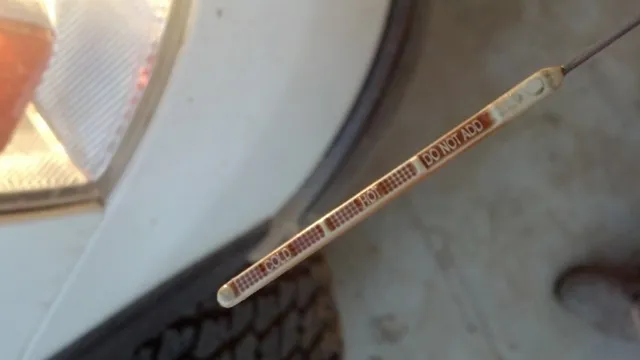Seat Saver: Your Ultimate Guide to Fixing Sagging Drivers Seat Like a Pro
Are you tired of driving with a sagging driver’s seat? It’s not only uncomfortable, but it can also lead to back pain or even cause an accident, as it affects the position of the driver. Fortunately, fixing a sagging driver’s seat is not a difficult task, and it can save you from spending a fortune on a new car seat. Just like anything in life, prevention is better than cure.
Regularly cleaning your car seats and using them properly can prevent sagging, but if it’s already sagging, several things could have caused it, such as worn-out foam or damage to the seat frame. In this blog, we’ll take a look at some practical steps on how to fix your sagging driver’s seat, including simple DIY fixes and professional help options. Whether you are a car enthusiast or just a regular driver, this guide will help you get your car seat back to its most comfortable state.
So, sit back, relax, and let’s get started on fixing your sagging driver’s seat!
Determine the Cause
If you’re experiencing a sagging driver’s seat, the first step is to determine the cause. Overtime, constant use and wear and tear of your car’s seat can cause it to sink or become misaligned. One possible cause is damaged or worn out springs, which provide support to the seat.
Another possible cause is a broken or damaged seat frame, which can cause the seat to move or tilt unnaturally. You may also want to check the seat’s upholstery or foam padding, as it could be worn out or compressed. Once you’ve identified the cause, you can begin to explore different solutions to fix your sagging seat.
Whether it’s replacing damaged parts or implementing secondary support, there are various options available to help bring life back to your driver’s seat and ensure comfortable drives in the future.
Check Underneath the Seat
When dealing with car troubles, it’s always a good idea to check underneath the seat. This simple step can help determine the cause of unexpected noises or malfunctions. Sometimes loose items, like coins or food, can find their way under the seat and start rattling around, causing distractions and even damage to your car’s mechanisms.
In other cases, there may be more serious issues, like loose bolts, worn-out belts, or broken parts, that are causing the problem. By taking a look underneath the seat, you can get a better idea of what’s going on and take the necessary steps to fix it. So, next time you hear a strange noise or notice something unusual about your car, be sure to check under the seat and see if there’s an easy fix.
Your car, and your wallet, will thank you.

Check Seat Tracks
When checking seat tracks, it’s important to determine the cause of any issues you encounter. Common problems that occur with seat tracks include stuck or difficult-to-move seats, seats that move too easily, or seats that are crooked or not aligned properly. One possible cause of these issues is worn-out or damaged seat tracks, which can occur over time with regular use.
Additionally, debris or dirt buildup can affect the smooth movement of the seats and cause issues. Sometimes, the issue may be due to a faulty motor or wiring problem. If you’re having trouble diagnosing the cause of the issue, it’s always best to consult a professional mechanic or repair shop.
By addressing any issues with your seat tracks promptly, you can ensure your seats are working properly and keep yourself and other passengers safe and comfortable on the road.
Tighten Loose Parts
If you’re experiencing a sagging driver’s seat, the problem may be caused by loose parts. To fix this issue, you need to tighten the loose parts of your car seat. Start by figuring out which parts are loose and need tightening.
The most common culprits are the bolts and nuts of the car seat. You’ll need a wrench or socket set to tighten them. Make sure to tighten them firmly but not too tight to avoid damaging the parts.
Another part that might be causing the sagging is the seat rail. Check the bolts and nuts that connect the rail to the car’s frame and tighten them as necessary. Lastly, check the springs under the seat cushion.
These might have loosened over time and need to be repositioned. With these simple fixes, you’ll be able to restore your car seat to its original, supportive position and enjoy a more comfortable ride.
Tighten Bolts and Screws
Are you noticing a lot of rattling and shaking when you’re driving your car? Maybe you’re hearing strange sounds or feeling vibrations that weren’t there before. It could be a sign that some of your bolts and screws are coming loose. This might seem like a small problem, but it can be dangerous if left untreated.
Loose parts can cause major damage to your vehicle, and put you and your passengers at risk. So, what should you do if you suspect that your bolts and screws are feeling a bit loose? The first step is to tighten them up. Make sure you have the right tools for the job, and take the time to go through all of the important parts of your car.
It might take a little while, but it’s worth it to ensure that your vehicle is running smoothly and safely. By tightening loose parts you will not only prolong the life of your car but also enhance your driving experience.
Fix Broken Springs
If you are experiencing problems with your garage door, there is a good chance that a loose part may be the culprit. As garage doors are constantly opening and closing, parts can become worn or loosened over time. Fortunately, tightening loose parts can be a quick and effective solution.
The first step is to inspect the garage door and identify any parts that are visibly loose or wobbly. These may include the hinges, brackets, rollers, or even the opener itself. With the proper tools and a little bit of know-how, you can easily tighten these parts and restore the functionality of your garage door.
It’s important to address these issues quickly, as loose parts can cause additional damage over time and potentially lead to the need for more costly repairs. By regularly inspecting and tightening any loose parts, you can ensure that your garage door operates smoothly and safely for many years to come.
Add Additional Support
If you find yourself sinking lower and lower in your driver’s seat, you may need to add some additional support to fix the sagging. One solution is to purchase a seat cushion or lumbar support pillow that can be placed behind your back. These can provide extra cushioning and support to alleviate pressure points and improve posture.
Another option is to install a seat wedge, which is specifically designed to correct alignment and relieve pressure on the spine. These can be found at automotive stores or online retailers and can be easily installed by sliding them underneath the seat cushion. Additionally, you could try adding more padding to the seat foam or replacing the worn-out springs in the seat frame to restore the seat’s original firmness and support.
By taking these steps, you can fix a sagging driver’s seat and enjoy a more comfortable and supportive ride.
Use Seat Cushion
Back pain is a common problem faced by many people who work long hours at a desk. Sitting for prolonged periods can cause discomfort and put a lot of strain on your lower back. One way to alleviate the discomfort is by using a seat cushion.
Adding additional support to your chair can help improve your posture and reduce pressure on your lower back. Seat cushions come in different shapes and sizes and can be easily attached to your chair. They are designed to distribute your weight evenly, reducing pressure points and providing greater comfort.
Seat cushions can also help improve your sitting position, reducing fatigue and preventing your back from slouching. Investing in a good quality seat cushion can make a huge difference in your overall comfort and wellbeing, making long hours at your desk much more bearable. As someone who spends a lot of time at a desk, if you want to avoid back pain and fatigue, using a seat cushion is an excellent way to enhance your work environment.
Install a Wedge or Shims
If you’re looking to add additional support to a structure, installing a wedge or shims can be a great solution. These simple yet effective tools can help redistribute weight and ensure that the load is evenly balanced across your foundation. Wedges are typically triangular-shaped pieces of wood or plastic that are placed underneath a structure to create a sloping plane of support.
Shims, on the other hand, are small, thin pieces of wood or plastic that can be inserted between two surfaces to create a tighter, more secure fit. Both wedge and shims can be used in a variety of different applications, from leveling out a wobbly table to supporting a sagging floor joist. In any case, adding additional support with a wedge or shims can be an easy and cost-effective solution that can help prevent further damage and save you time and money in the long run.
So, whether you’re dealing with a minor structural issue or a major problem, consider giving these tools a try and see if they can help you achieve the support you need.
Professional Repair Options
If you’re dealing with a sagging driver’s seat in your car, there are a few professional repair options that you can consider. First, you can take your vehicle to a local auto upholstery shop, where they can replace the foam and/or springs that support the seat. This option is best if your seat has completely lost its shape and needs a complete overhaul.
Another option is to take your car to a mechanic who specializes in seat repair. They can diagnose the specific problem and fix it, whether it’s a broken frame or a faulty motor. If you’re working with a tight budget, you can try fixing the issue yourself by purchasing a seat cushion or using a wedge cushion to raise the seat’s height.
However, these DIY options may not be a long-term solution, and it’s best to consult a professional if you want to fix the problem for good. Remember, it’s essential to take care of any issues with your driver’s seat for your safety and comfort on the road.
Conclusion
If you find yourself sinking lower and lower every time you get into your car, fear not! The solution to fixing your sagging driver’s seat is simple. First, assess the root cause of the sagging – is it worn out cushions or loose bolts? Once you’ve identified the culprit, it’s time to take action. Whether it’s replacing the cushions or tightening the bolts, fixing your sagging seat will not only make for a more comfortable ride, but also a safer one.
So don’t let a droopy seat bring you down, get to work and enjoy the newfound support!”
FAQs
Why is my driver’s seat sagging?
Driver’s seats can sag due to excessive use, worn out springs, or damaged support structures.
Can I fix a sagging driver’s seat on my own?
It is possible to fix a sagging driver’s seat on your own depending on the cause of the sagging. However, it is recommended to seek professional help for a permanent and long-lasting fix.
How much does it cost to fix a sagging driver’s seat?
The cost to fix a sagging driver’s seat can vary depending on the cause of the issue and the type of repair needed. It can cost anywhere from a few hundred dollars to over a thousand dollars.
What are some temporary fixes for a sagging driver’s seat?
Some temporary fixes for a sagging driver’s seat include using a seat cushion, adding extra support with foam or towels, or adjusting the seat position to reduce pressure on the sagging area.





